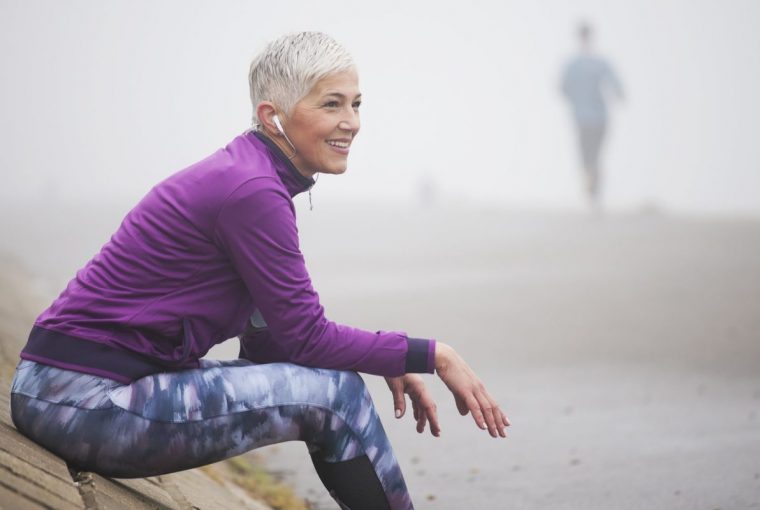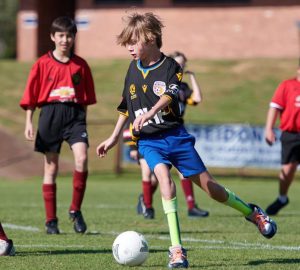“Wait until you are older” they said. Suddenly you roll over one morning and your weekend warrior- self is sore, even though you literally did nothing the day before.
It’s no surprise that as we age, exercise as we know it, can have both positive and negative effects on our bodies, especially if we over-do it.
Many Canadians are unaware of the physical activity guidelines and recommendations for activity to maintain a healthy lifestyle.
The Canadian Physical Activity Guidelines indicate that adults aged 18-64 years old should accumulate at least 150 minutes of moderate to vigorous intensity aerobic physical activity per week in bouts of 10 minutes or more (Tremblay et. al 2011). This is a stark change from the previous recommendation of 30 minutes per day, and allows individuals to build their exercise regime and schedule their lives accordingly. So if time is an issue (or an excuse), by doing a little bit every day, as long as 150 minutes is accumulated per week, you are maintaining a healthy lifestyle and reducing incidence of disease later in life.
Additional recommendations include muscle and bone strengthening activities that use major muscle groups at least two days per week (Tremblay et. al 2011). For those who are over 65 years of age, in addition to the aforementioned recommendations, the inclusion of balance activities to prevent falls is an absolute must.
In Your 30s
Between juggling a career, maintaining a family, and just getting ‘through it’, life can be challenging enough – let alone to even think about exercise! For those athletes who only performed one sport during their younger years, your thirties are a perfect opportunity to try new things with cross-training. One of the most efficient methods of cross-training is with High-Intensity Interval Training or ‘HITT’. It is a timely way to get in exercise, and research indicates that its effects are far better than prolonged cardio training (Zhang et al. 2017). So whilst marathon feel-good run sessions will get you towards your 150 minutes, they simply won’t cut it anymore as they would in your 20s.
Strength training for this age group is of utmost importance as well. In your thirties, major changes can still be made to maintain overall bone density – especially for women prior to their menopausal years. Yoga and its added benefits of reducing anxiety and stress are also fantastic for overall flexibility; however, it does not substitute cardiovascular or strength training exercise. At best, it is should be done in addition to the 150 minute physical activity guideline (Tremblay et. al 2011). With still feeling like you can bounce back as though you were in your mid-twenties, over-training is most commonly seen in practice for this age group, along with minimal warm up and recovery. Classically, this is where injuries start to set in when all of a sudden something ‘hurts’ due to repetitive strain and the same motion of activity over and over again.
Expert Tip:
Proper Warm-Up and Recovery
In Your 40s
The middle age crises for some, as we say hello to the infamous ‘good year’ tire; fat distribution drastically changes as our metabolism slows and we start to notice an accumulation of fat around our midsections, more specifically around our abdominal organs (Brooks et al. 2016). Even if your weight does not drastically change, your body mass shifts to these not so nice areas.
Practically speaking, the scale can be deceiving.
Increases in the added weight in these areas can lead to reduced core strength, leading to pelvic tilt changes (anterior pelvic tilt) and ultimately increase your risk for low back pain (Brooks et al. 2016). Essentially, the kangaroo pouch of abdominal fat causes your pelvis to tilt forward and increases the stress place on your low back muscles. Most commonly, seen in practice is a lack of awareness of the core due to a sedentary lifestyle; long hours at the office can do this, so strengthening your core can aide to reduce incidence of low back pain and improve your overall performance.
Expert Tip:
TA exercise, Cat –Cow, Sphinx
In Your 50s
Sag, saggy, sagging. Profound changes with the aging process take place after age 50, with leg lean body mass loss of 1-2% per year and a strength loss of 1.5-5% per year (Keller and Engelhardt 2014).Sarcopenia, or age-related muscle atrophy is common in this age range and results in declining overall strength, leading weakness and ultimately injury (Keller and Engelhardt 2014).
With muscle mass continuing to decline, we start to droop with a forward posture as the weakness sets in. Classic presentation of this in practice occurs with an increasing incidence of shoulder injuries, such as rotator cuff tears sans trauma. While certainly, it is not ‘all downhill from here’ remaining active with aerobic exercise including running, cycling, swimming is crucial to maintain muscle mass. In addition to daily training to combat muscle atrophy, research indicates that consistent protein ingestion after training will assist in building muscle (Keller and Engelhardt 2014). Pair this with maintaining adequate bone density by including weight-bearing activities and you will maintain good shape, literally. While swimming seems easy on the joints, don’t skip the walk and or run around the block or supplementing with Vitamin D and Calcium regularly.
Expert Tip:
Postural Strengthening / Deep Row
In Your 60s and Beyond
Age-related changes in postural alignment, dynamic balance, functional mobility and back extensor strength are associated with mobility limitations and an increased fall risk in older adults (Granacher et al. 2013)
While the groundwork has been laid in prevention of high-risk diseases in the years before, as our bones become more fragile we are at risk for great injury with a fall. Practicing balance is key.
Expert Tip:
Single Leg Stance
Regardless of your age, staying active is crucial to staying healthy, warding off disease and maintaining a mentally and physically well-balanced lifestyle. While certainly we all may get older, you don’t have to stop doing something because it ‘hurts’. Modify your activities and find the root cause of the problem: Is it your form? Are you overtraining? Do you need to modify your eating habits?
30 is not the new 20. 30 is simply 30. By embracing your age and by being mindful with exercise, you will reduce the incidence of injury and maintain your weekend-warrior self for years to come.
Dr. Kara Otuomagie
The content is not intended to substitute the medical advice of your regular health care provider. If you have an injury or medical condition, seek consultation with a health professional for personalized recommendations based on your health history.




